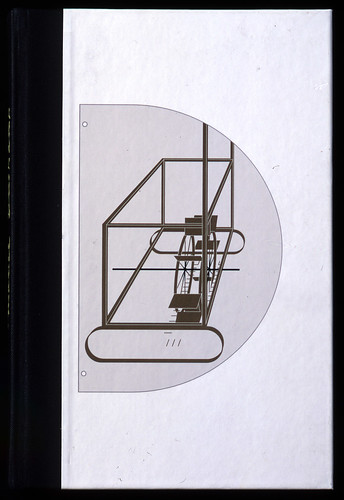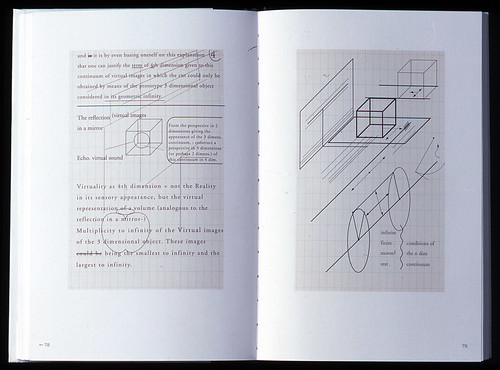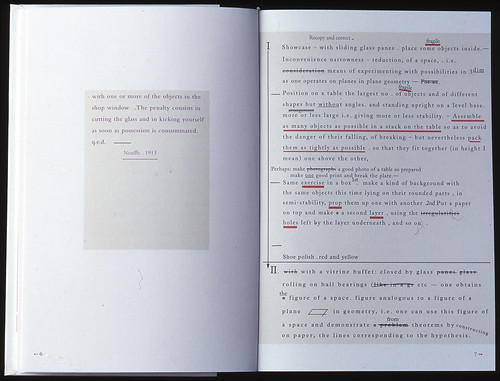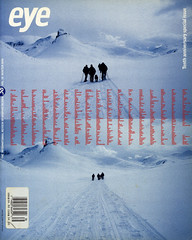Thursday, 3:08pm
15 September 2011
Typotranslation: à l’infinitif
Richard Hamilton turned Duchamp’s notes into typographic form
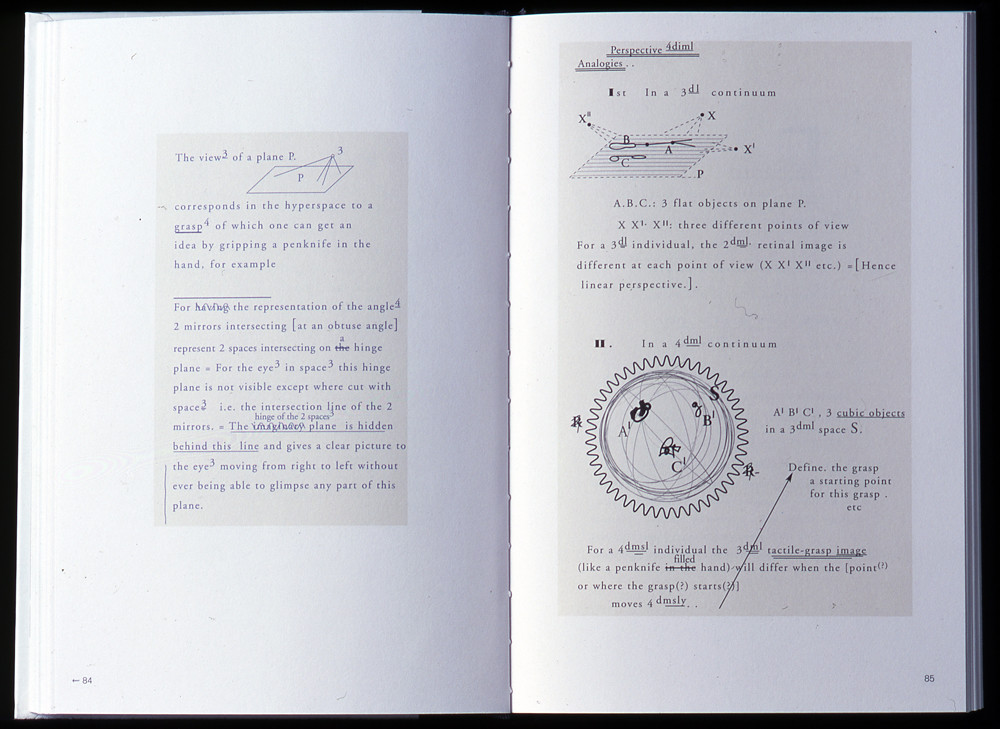
‘It’s as though a science textbook has been put into type by an intoxicated typographer with a strange sense of humour and unusual aesthetic flair,’ wrote Rick Poynor in ‘Typotranslation’, published in Eye 38 at the end of 2000.
The subject was the typographic translation of Marcel Duchamp’s handwritten notes for The Bride Stripped Bare by Her Bachelors, Even (also known as the Large Glass), a painstaking project undertaken twice by the British artist Richard Hamilton, who died on Tuesday (13 September) at the age of 89.
Hamilton’s first typotranslation of these notes, the Green Book, was published by Lund Humphries in 1960. His translation of a second set of Duchamp’s notes, à l’infinitif (above and below) was another labour of love, which took three years.
Above: cover of a l’infinitif, published by Hamilton’s own imprint The Typosophic Society in 1999 in an edition of 5000. The cover image is Duchamp’s Glider, an element in the Large Glass. (Vector graphics reconstruction for the book by Rod Hamilton.)
To convey the graphic compexity of Duchamp’s handwritten notes, published in facsimile in 1967 as the White Box, Hamilton and collaborator Ecke Bonk (artist and author of Marcel Duchamp: The Portable Museum) used seventeen different typefaces, and recreated drawings and charts using Illustrator and Quark XPress.
Poynor notes that ‘the eccentricities of form are always grounded in the need to transliterate the original with the utmost faithfulness and lucidity.’
Rick Poynor writes about Hamilton today on Design Observer: ‘Richard Hamilton, the Great Decipherer’.
For the full article, including Duchamp’s original notes, see Eye 38, Winter 2000 (below).
Eye is the world’s most beautiful and collectable graphic design journal, published quarterly for professional designers, students and anyone interested in critical, informed writing about graphic design and visual culture. It’s available from all good design bookshops and online at the Eye shop. For a taste of the new issue, see Eye before you buy on Issuu. Eye 80, Summer 2011, is out now.

